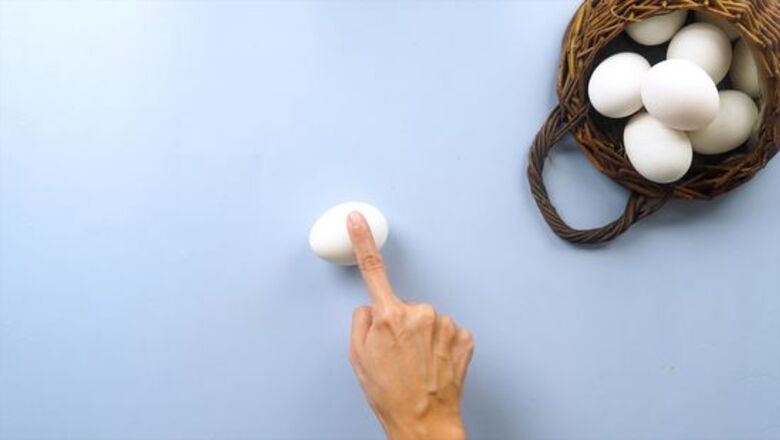
views
- Spin the egg on a flat surface and stop it suddenly with your index finger. If it stays still, it’s hard boiled, but it’s raw if it continues to wobble.
- Shine a flashlight through the egg. A hard boiled egg will look dark and opaque, but a raw egg up will light up.
- Put the egg in hot water. Raw eggs produce a stream of air bubbles and boiled eggs don't.
- Shake the egg gently. A hard boiled egg feels solid, but the weight will shift inside if it's raw.
Spin Test
Spin the egg on a smooth, flat surface. Set the egg on its side on a cutting board or countertop. Pinch the egg between your fingers and spin it like it’s a top so it’s moving at a steady pace.
Check if the egg is steady or wobbly while it’s spinning. Carefully watch how the egg moves after you spin it. If the egg spins quickly and steadily like a top, the egg is hard boiled. If it spins slowly, has a major wobble, or doesn’t spin at all, the egg is still raw. A boiled egg spins at a consistent speed because the solid whites and yolk make its center of gravity stable. The liquid whites and yolk inside a raw egg shift around as the egg spins, so it throws off the balance more.
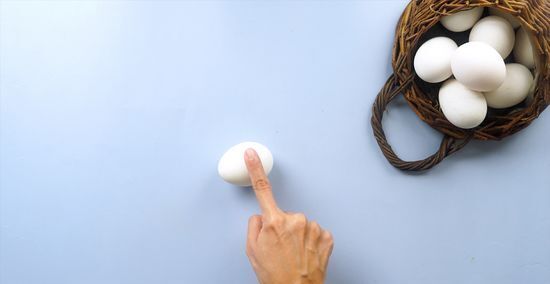
Stop the egg quickly. While the egg is still going at full speed, quickly place a finger down on its center to make it stop. Once the egg comes to a stop, immediately remove your finger. Press hard enough to stop the egg within 1–2 seconds, but don’t press so hard that you accidentally break the shell.
Check if the egg starts spinning again to see if it’s raw. If the egg stays still after you lift your finger, then you have a hard boiled egg. However, a raw egg will start slowly spinning again after you stop it. Why does a raw egg keep spinning? Since the whites and yolk are liquid, they’re still spinning inside the shell. The egg's center of gravity shifts as the liquid contents move around, causing the egg to keep moving.
Alternative Tests
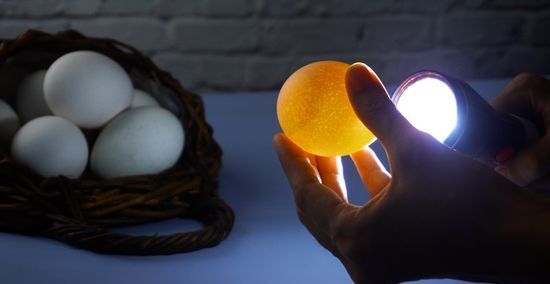
Shine a flashlight through the egg to see if it lights up. Turn off the lights in the room so it’s easier to see the egg with your flashlight. Turn the flashlight on and hold it against the side of the egg. If the egg is raw, it will light up like a lantern since the liquid inside allows the light to shine through. If the egg is dark and opaque, then it’s hard-boiled because the cooked white and yolk don't let any light through. This test works best with smaller flashlights so that the rim of the flashlight sits perfectly against the egg’s shell.

Put the egg in hot water and check for a stream of air bubbles. Place the egg in a pot or bowl of nearly boiling water. Look for small streams of bubbles coming out of the shell of the egg to tell if the egg is raw. If you don’t see any bubbles, then your egg has already been boiled. Why do raw eggs make bubbles? Egg shells are not completely solid and are actually covered by thousands of tiny holes that can allow gasses to pass through. Heating the egg makes the gas inside the shell expand and pass through the holes. Boiled eggs don’t make bubbles because the gas was already forced out when you cooked them. Quickly take any raw eggs out of the water unless you plan on boiling them right now. Otherwise, they’ll start cooking and solidify inside.
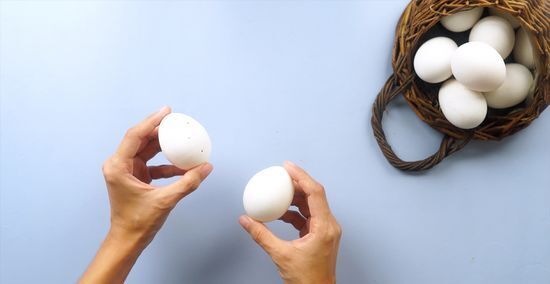
Shake the egg to feel if the yolk and whites move around. Hold the egg in your fingertips and give it a gentle shake like a maraca. Concentrate on how the egg feels when you move it around. A hard boiled egg feels solid like a rock, but you’ll be able to feel the liquid inside a raw egg moving and shifting as you shake it. If you hear a sloshing sound when you shake a raw egg, it means the egg is older and works better for baking or scrambling.
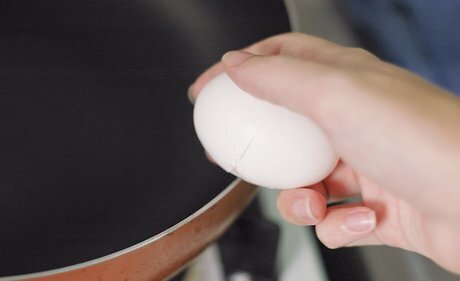
Crack open the egg if all else fails. If you’re still not able to tell after any of the tests, tap the egg against the rim of a bowl to break the shell. If the egg is raw, the whites and yolk will start to ooze out. If your egg is hard boiled, then it will look and feel solid under the shell. If you’re making hard boiled eggs and want to know when they’re done, cut one of them in half to check if the yolk is solid. If the yolk is still runny, let your eggs boil for another minute or two. It usually takes around 10–12 minutes to hard boil an egg.
Marking Boiled Eggs
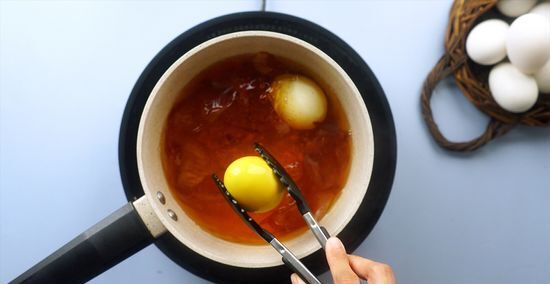
Boil with onion skins. Take the skins from about 12 red or yellow onions and bring them to a boil on your stove. Turn the heat down to a simmer and let the onion skins cook for 30 minutes. Strain the skins out and add pre-cooked hard boiled eggs to the water. Let the eggs soak for up to 1 hour to darken them to a nice beige color so they’re easier to tell apart from your raw eggs. Yellow onions create a light tan color while red onions make a darker red. None of the onion flavor will get into your eggs, so they’ll taste the same as undyed eggs.

Dye the eggs with food coloring. When you're boiling the eggs in a small pot, add a few drops of food coloring and 1–2 teaspoons (4.9–9.9 ml) of vinegar directly to the water. Alternatively, hard boil the eggs first and then soak them in a mixture of ⁄2 cup (120 ml) of boiling water, 1 teaspoon (4.9 ml) vinegar, and a few drops of food coloring afterward. Color-code your eggs if you’re making multiple kinds. For example, you may dye hard boiled eggs red and soft boiled eggs blue so they’re easier to tell apart.

Mark the shells with a marker. Simply boil your eggs as normal before removing them from the water and allowing them to dry. When they’re completely dry, mark the shell with a "B" for "boiled" so you can easily tell them apart with a quick glance. Don't worry — since you have to remove the shell to eat boiled eggs, this doesn't make your eggs unsafe to eat, even if you use ink.



















Comments
0 comment